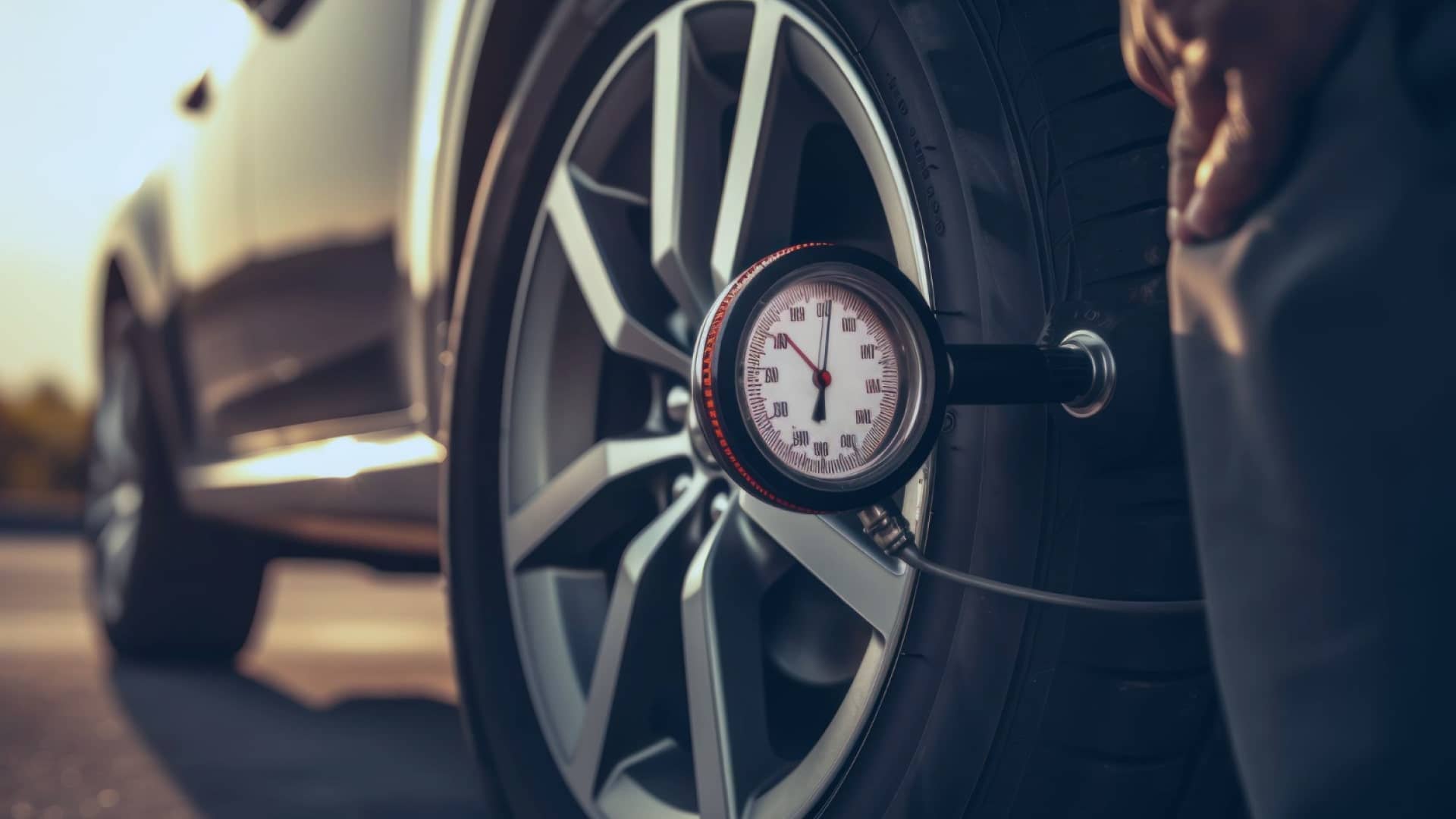In the world of fleet management and automotive care, few components are as critical yet overlooked as tire pressure systems. Tire pressure is not just a trivial detail; it’s a vital aspect of vehicle performance, safety, and efficiency. This blog delves into the significance of tire pressure systems, their types, measurement techniques, and the myriad of benefits they offer to fleet operators and maintenance companies.
Understanding Tire Pressure Systems
Tire Pressure Monitoring Systems (TPMS) are sophisticated technologies designed to monitor the air pressure inside pneumatic tires. They provide real-time tire pressure information to the driver, often via a gauge, a pictogram display, or a simple low-pressure warning light. The primary purpose of these systems is to alert a driver to a tire that is significantly under-inflated, potentially preventing severe tire wear, blowouts, and accidents.
Why it is Needed?
Tire pressure affects a multitude of vehicle dynamics, including but not limited to fuel efficiency, tire lifespan, handling, and the overall safety of the vehicle. Properly inflated tires ensure optimal contact with the road, leading to improved traction, stability, and braking efficiency. Conversely, under-inflated tires can lead to increased rolling resistance, which means more fuel consumption and wear. Over-inflation can also be problematic, leading to less tire-to-road contact and a bumpier, more dangerous ride. Tire pressure systems serve as an invaluable tool in maintaining the right balance.
Types of Tire Pressure Monitoring System
Direct and Indirect TPMS are two types of Tire Pressure Monitoring Systems used to monitor and report the air pressure inside vehicle tires. They are crucial for maintaining proper tire pressure, ensuring vehicle safety, and improving performance.
Direct TPMS
Direct Tire Pressure Monitoring Systems (Direct TPMS) use tire pressure monitoring sensors within each tire to directly measure the pressure levels. These sensors transmit real-time pressure information to the vehicle’s computer system, often displaying the data on the dashboard. This system provides specific readings for each tire, making it easier to identify which one may be under or over-inflated.
Key features of Direct TPMS include:
- Accuracy: It provides precise pressure readings for each tire.
- Real-time alerts: Direct TPMS can alert drivers immediately when a tire’s pressure drops below or rises above the recommended level.
- Battery-powered sensors: The sensors are typically battery-operated and may need replacement every 5 to 10 years.
Indirect TPMS
Indirect Tire Pressure Monitoring Systems (Indirect TPMS) do not use physical sensors inside the tires. Instead, they work with the vehicle’s Antilock Braking System (ABS) to monitor the rate of tire rotation and other signals outside of the tire. It’s based on the principle that a tire’s rotational speed changes with changes in pressure. For example, an under-inflated tire will rotate at a different speed than a properly inflated one.
Key features of Indirect TPMS include:
- Cost-effectiveness: It’s generally less expensive than Direct TPMS because it uses the vehicle’s existing ABS sensors.
- Maintenance: There are no sensors in the tires, so there’s no need for sensor maintenance or battery replacement.
- Less precision: While it’s effective for detecting a significantly under-inflated tire, it may not provide the exact pressure reading or identify which tire is affected.
Measuring Fleet Tire Pressure
Measuring tire pressure is a critical routine for fleet operators. It usually involves using a reliable tire pressure gauge to check and adjust the tire’s inflation according to the manufacturer’s recommended levels. This process should be done regularly, ideally when the tires are cold, as heat can increase pressure inside the tire, leading to inaccurate readings.
Types of Tire Pressure: A Guide for Fleet Management
Understanding the types of tire pressure systems is crucial for any fleet management software and IoT telematics company. It helps in ensuring the safety and efficiency of the vehicles under your watch. Let’s dive into the different types of tire pressure that are pivotal for fleet operations.
Cold Tire Pressure
Cold tire pressure refers to the pressure in your tires after the vehicle has been idle for at least three hours. It’s the baseline pressure. Manufacturers provide recommended cold tire pressures because it represents the tire’s pressure in a rested, uninfluenced state. For accurate readings, always check the cold tire pressure.
Hot Tire Pressure
As a vehicle moves, tires generate heat, causing the air inside to expand and pressure to rise. The hot tire pressure is the inflated value when the tires are warm after driving. It’s usually higher than the cold pressure. While not ideal for adjustments, understanding hot tire pressure is crucial for diagnosing tire health and performance on the go.
Optimal Tire Pressure
Optimal tire pressure is the manufacturer-recommended value for the best balance of performance, safety, and efficiency. It considers the vehicle’s weight, design, and intended use. Adhering to this pressure maximizes tire lifespan, improves fuel economy, and ensures safety. Fleet management systems should monitor and maintain this pressure.
Over-Inflation and Under-Inflation
Over-inflation occurs when the tire’s pressure systems exceed the recommended level. It reduces the tire’s contact area with the road, leading to decreased traction and uneven wear. Conversely, under-inflation means the tire pressure is below the recommended level. It increases rolling resistance, fuel consumption, and wear. Both conditions can lead to tire failure and should be avoided.
Seasonal Tire Pressure
Temperature changes impact tire pressure. In colder months, pressure can drop, while it might rise in warmer months. Adjusting tire pressure according to seasonal changes is vital for maintaining optimal performance and safety. Fleet vehicles operating in varying climates must consider these variations.
Why Understanding Tire Pressure Types Matters
For a fleet management software and IoT telematics company, understanding these types of tire pressure is essential. It ensures you can provide accurate, timely information to fleet operators. Proper tire pressure monitoring helps prevent accidents, save on fuel, reduce tire wear, and maintain vehicle health. In turn, this leads to safer, more efficient fleet operations and reduced costs.
Advantages and Benefits
The benefits of maintaining proper tire pressure through these systems are extensive. For fleet operators, they translate into:
- Cost Savings: Proper tire inflation ensures optimal fuel efficiency. Less fuel is wasted overcoming rolling resistance, leading to significant savings over a large fleet.
- Extended Tire Life: Correctly inflated tires wear more evenly and last longer. This means fewer replacements and repairs, saving money and reducing waste.
- Enhanced Safety: Adequate tire pressure is crucial for stable vehicle handling. A well-inflated tire can make a difference in avoiding accidents.
- Environmental Benefits: With better fuel efficiency and less frequent tire replacements, there are fewer emissions and less rubber waste, respectively.
Tire Pressure Systems for Fleet Operators and Maintenance Companies
For fleet operators and maintenance companies, tire pressure systems are not just helpful; they’re essential. These systems allow for regular, accurate monitoring of tire pressure across a fleet, ensuring each vehicle is running optimally. This not only reduces the risk of tire-related incidents but also aids in scheduling maintenance, preventing unexpected downtime, and prolonging vehicle life.
Moreover, advanced TPMS can be integrated into broader fleet management systems, providing data analytics and insights into vehicle performance and maintenance needs. This can lead to more informed decisions, better resource allocation, and ultimately, a more efficient and safe fleet.
Conclusion
Inflating your tires is not just about maintaining them; it’s about elevating the entire performance and safety of your vehicle or fleet. Tire pressure systems play a pivotal role in this process, offering a straightforward solution to what is a complex and critical challenge. By understanding, utilizing, and benefiting from these systems, fleet operators and maintenance companies can ensure safer roads, more efficient operations, and a healthier bottom line. So, remember, a small investment in tire pressure monitoring can lead to significant savings, safety, and sustainability. Inflate to elevate, because when it comes to tire pressure, what you monitor, you can manage.



